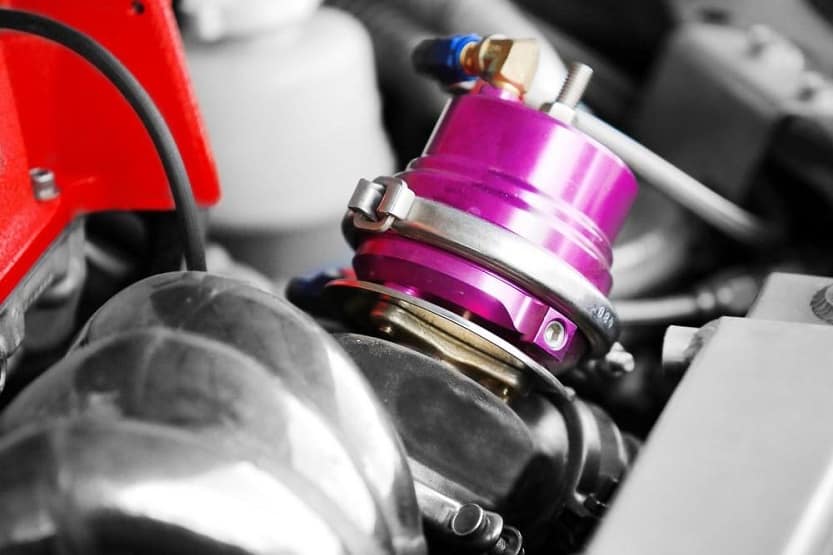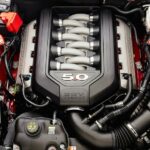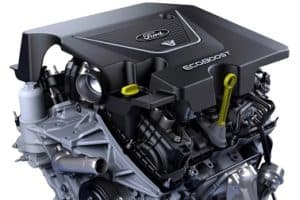7.3 Powerstroke problems can be a pain, especially if you don’t know how to fix them. What are the most common 7.3 Powerstroke problems?
Some of the most common 7.3 Powerstroke problems include Camshaft Position Sensor (CPS) failure, EBPV failure, fuel-bowl/water separator issues, leaking turbocharger up-pipes, transmission problems, wastegate issues, and injectors’ issues.
You can prevent these common issues from occurring by maintaining and managing the engine properly with regular engine check-ups.
Ford has used the 7.3 Powerstroke engine for some old vehicles, which many consumers consider efficient and reliable. But as nothing is ever perfect, you can also encounter problems with this power-packed engine.
In this article, we will look at the following four common 7.3 Powerstroke engine problems and provide a solution for each:
- 7.3 Powerstroke starting problems
- 7.3 Powerstroke injectors problems
- 7.3 Powerstroke transmission problems
- 7.3 Powerstroke wastegate problems
Read on to learn more about the various 7.3 Powerstroke common problems and how they can be fixed.

1. 7.3 Powerstroke Starting Problems
The engine may not start because of leaking turbocharger pipes, fuel bowl issues, EBPV failure, and other common engine problems. If any of the engine’s parts are damaged, your engine will not start no matter what you do. You can refer to the common 7.3 Powerstroke problems listed below.
Likewise, solutions are given for each of the problems. Take note that these are not shown in detail because a licensed mechanic must perform the intricate procedure.
Leaking Turbocharger Up-Pipes
Leaking of the turbocharger pipes would cause the 7.3 Powerstroke engine to lose power. The leak occurs mostly at the joints. The exhaust gas temps (EGT) would also increase.
Some drivers continue driving their vehicles as long as the leak is not so much. But it is not a good practice as the vehicle’s leakage may exacerbate, making your engine lose power and suddenly conk out. You may be left stranded wherever you are.
To fix this problem, find out the leak’s exact location, clean it out properly with a water hose, and take care not to apply excessive pressure. If the leak comes from the O-ring, change them.
When the damage includes the pipes, you will have to replace the leaking pipe as well.

Fuel Bowl Issues
When the fuel bowl heater fails or blows the maxi fuse, problems would occur. This problem would disable the Powertrain Control Module (PCM), preventing your vehicle from starting. This issue usually occurs in old vehicles.
Prevent this issue from occurring by cleaning the fuel bowl regularly and finding out any leaks or damages. You could also replace the ring and the valve and rebuild the bowl thoroughly.
Exhaust Back Pressure Valve (EBPV) Failure
EBPV leaking can cause EBPV failure. The leak may seem to come from the pedestal, so you have to determine where the leak comes from. Clean the pedestal to find out if the EBPV is indeed leaking. As you clean the valve, be careful not to damage any of the other parts.
To fix this problem, install new O-rings or replace the pressure valve. This problem will not happen if you regularly clean your engine.
CPS Failure
When the 7.3 Camshaft Position Sensor (CPS) fails, it would shut the truck off, not allowing it to start. The CPS’s function is to ensure that the 7.3 Powerstroke engine delivers the fuel to the correct cylinder at the right time and in the proper sequence.
You could be driving at the start without any problems, and then your vehicle suddenly stops and cranks without re-starting. This occurrence is an indication of CPS failure. Other symptoms include:
- Difficulty in starting the vehicle
- Cranking but not starting
- Sudden engine failure
- Idling
- Tachometer not moving during cranking
- Unexpected stalling
If any of these symptoms occur, they would indicate that the CPS is damaged or dysfunctional.
To fix this problem, you will have to replace the CPS. Ensure that you remove the battery cables first before working on your vehicle’s electrical system.
Carefully remove and replace the old CPS with the new one, taking care not to damage any other parts. To play safe, you may want to let a competent car mechanic install the new CPS.
2. 7.3 Powerstroke Injector Problems
The injection system’s function is to supply fuel to the injectors and atomize it while adjusting the correct quantity of fuel at a precise time. And the system has to provide the appropriate amount of fuel at the right time for proper combustion to occur.
The injectors’ average lifespan is around 100,000 miles. It also depends on the injectors’ body and nozzle damage. If any of these parts are damaged, the vehicle’s reliability will decrease.
When there are problems with the vehicle’s injector, you will notice black smoke emissions even when you’re not accelerating the vehicle, while white smoke when driving denotes a loose injector. But when the white smoke appears when you’re starting the vehicle, it’s a normal occurrence.
Other symptoms include:
- Difficulty when starting the engine
- Overwhelming fuel odor
- Misfiring
- Inability to reach full RPM
- Dirty emissions
- Loud knocking sounds
- Uneven idling
To fix this problem, manually inspect the vehicles’ injector system and any minor damages repaired, including significant damages or repairs. Sometimes, merely cleaning the injector system could solve the problem.
3. 7.3 Powerstroke Transmission Problems
Transmission problems occur when the injector system doesn’t work efficiently. Such problems will not happen if the injector system is in good shape. To lengthen the life expectancy of your 7.3 Powerstroke engine, you have to maintain lower transmission temperatures.
The vehicle’s shift, torque converters, and electronic control systems must prevent transmission failure, causing heat accumulation. When this happens, your transmission would be inefficient.
To fix this problem, check your injector and control systems properly and immediately deal with any problem in the engine’s parts.
4. 7.3 Powerstroke Wastegate Problems
One of the problems of the 7.3 Powerstroke engine is a failing or bad wastegate hose. You would know when your engine has wastegate problems if your vehicle:
- Doesn’t accelerate when you want it to
- The turbo boost pressure is oscillating
The wastegate’s function is to control the engine’s maximum boost by bypassing some parts of the turbocharger and opening the exhaust bypass valve. In turn, a pressure actuator connected to a multi-pressure device controls the wastegate. The vehicle’s wastegate protects the turbocharger and the engine by accomplishing this process.
You can optimize your wastegate’s maximum flow by installing it in a perfect position relative to the primary exhaust tubes that go to the turbine. Additionally, you should place the inlet tube at a more than 90-degree angle to allow proper wastegate function. The appropriate function of the wastegate would adequately regulate the engine’s speed.

To fix this problem, check the condition of the wastegate. It should only open after the engine reaches a pre-set maximum boost pressure. Find out if the spring in the actuator is functioning well. If the wastegate opens when it should not, you may need to replace it. This action is to ensure that it gets rid of exhaust gas when it is time.
We have learned about 7.3 Powerstroke problems that you may encounter, including 7.3 Powerstroke starting problems, 7.3 Powerstroke injectors problems, 7.3 Powerstroke transmission problems, and 7.3 Powerstroke wastegate problems. Let’s now proceed to tips on keeping your 7.3 Powerstroke engine in top condition.
Coyote 5.0 Engine In the Ford F150
Ford 7.3 Powerstroke Engine Care
1. Establish Regular Maintenance of the 7.3 Powerstroke Engine
You must know when to replace specific parts of your engine to maintain the engine properly.
Replace the oil filter and engine oil after six months or 5,000 miles of regular operation. If you have worked the engine more than you should, you should replace the fuel filter after three months or 3,000 miles.
Remember to replace the fuel filter whenever necessary and after 15,000 miles. You can replace the engine air filter after 30 months, 30,000 miles, or whenever needed.
In addition, you must replace the manual transmission fluid after 60,000 miles. You also have to replace the automatic transmission fluid after 30,000 miles under normal usage and 21,000 miles under excessive duty.
Remember to flush the engine cooling system after 50,000 miles or after 30,000 miles of travel. You may want to do it regularly after every 36 months interval.
When the axle comes in prolonged contact with water, you must drain and replace the oil as soon as possible. Replace the transfer case fluid after 60,000 miles.
You should replace the rear differential fluid 100,000 miles of normal operation or 30,000 miles of heavy-duty usage. This frequency of replacement also applies to the front differential fluid.
2. Let a Trusted Car Mechanic Examine Your Car Annually
No matter how efficient your car functions, you still have to let a licensed car mechanic go over it every year. This step is to prevent any minor repairs from becoming major ones. You can save on repair costs by preventing major damages from happening.
Additionally, this regular engine overall hauling would keep you and your family safe while traveling. Safety should be your utmost priority.
What Is the 7.3 Powerstroke Engine?
This engine uses direct injection and produces up to 250 horsepower and 505 pound-feet torque for its automatic transmission. On the other hand, its manual transmission vehicles produce 275 horsepower and 525 pound-feet of torque.
It is also electronically controlled, with its bore and stroke measuring 4.11 inches by 4.18 inches. These measurements create a 7.3L displacement.
Ford used the 7.3 Powerstroke engine in the Ford-E Series from 1994 to 2003. Other Ford models with this engine are the Ford F-Series from mid-1994 to mid-2003 and the Ford Excursion models from 2000 to 2003.
Furthermore, the Powerstroke engine has several types: the 3.0L, 3.2L, 6.0L, 4.5L, 6.0L, 6.4L, 6.7L, and 7.3L. Many consumers believe that the 7.3 Powerstroke was the best engine that Ford built. But through the years, Ford received reports about problems regarding the engine.
For you to know what type of engine your Ford vehicle has, here are the years when Ford made use of the different kinds of Powerstroke engines.
- 2018 up to the present – Ford used the 3.0L for the F-150 model
- 2015 up to the present – The Ford Transit used the 3.2L
- 2005-2010 – The Low Cab Forward used the 4.5L engine
- 2004-2010 – The Ford E-Series used the 6.0L
- Mid-2003 to 2007 – The Ford F-Series
- Mid-2003 to 2005 – 6.0L engine for the Ford Excursion
If your Ford vehicle uses the 7.3 Powerstroke engine, then it is an old model, as Ford only used this type of engine up to 2003.
So, what are the Powerstroke problems that consumers commonly encounter? Here are some of the most common issues you may also have with your 7.3 Powerstroke engine.
Conclusion – 7.3 Powerstroke Problems
You have to be aware of the 7.3 Powerstroke problems you may encounter, so you know how to avoid them. Most of the issues include Camshaft Position Sensor (CPS) failure, leaking turbocharger up-pipes, transmission problems, wastegate issues, EBPV failure, fuel-bowl/water separator issues, and injectors’ issues.
In this article, we looked at the following:
- 7.3 Powerstroke starting problems
- 7.3 Powerstroke injector problems
- 7.3 Powerstroke transmission problems
- 7.3 Powerstroke wastegate problems
If the issue is beyond repair, the best option is to replace it with new operating parts. Ascertain that your product source is also legitimate and trusted. To guarantee this, you may want to purchase from an authorized Ford store.
If you want to save on cost, you could repair the damaged part of the 7.3 Powerstroke engine; nevertheless, buying a new engine part is the best way to solve your vehicle’s Powerstroke problems.
Related reading:
Ford 2.7 EcoBoost Problems and Solutions
Ford F-150 Years to Avoid [3 Worst]
White Smoke Coming From Exhaust [Startup, Idle, or Accelerating]



![Car Having Trouble Starting [Causes and How to Fix] car having trouble starting](https://roadsumo.com/wp-content/uploads/2021/09/car-having-trouble-starting-150x150.jpg)

![What Is a Transmission Flush? [All About Transmission Flushes] what is a transmission flush](https://roadsumo.com/wp-content/uploads/2021/12/what-is-a-transmission-flush-150x150.jpg)


![Read more about the article 2003 Duramax Specs, Problems [LB7 Full Review]](https://roadsumo.com/wp-content/uploads/2022/06/2003-Duramax-300x200.jpg)
